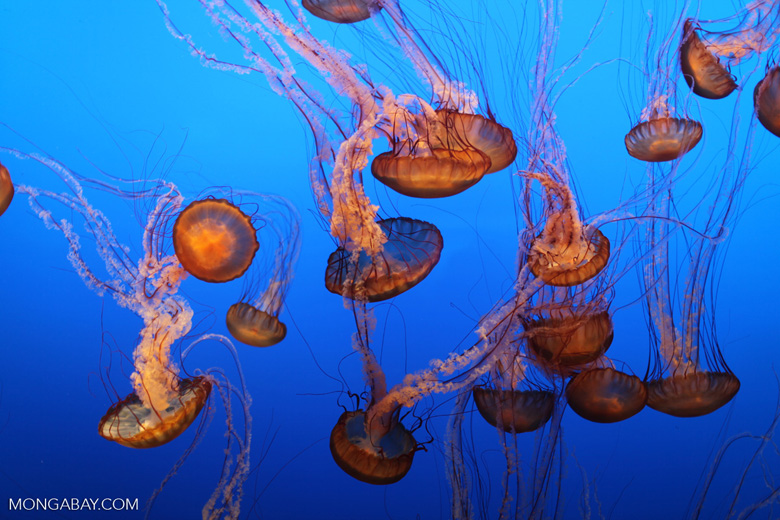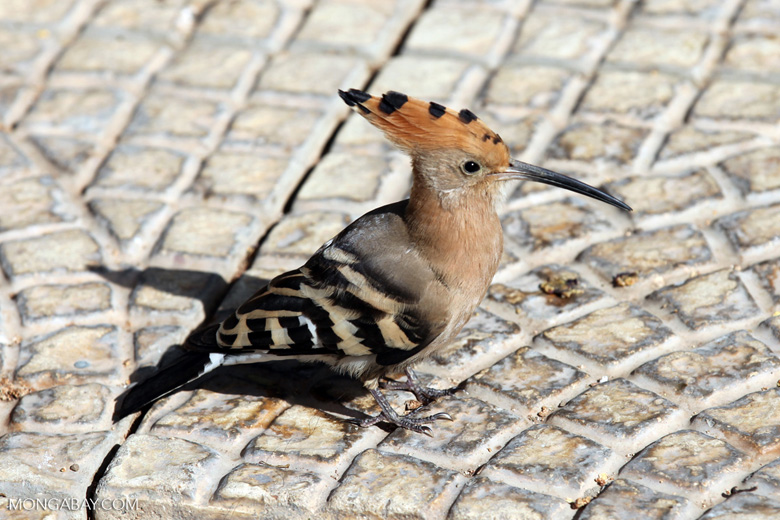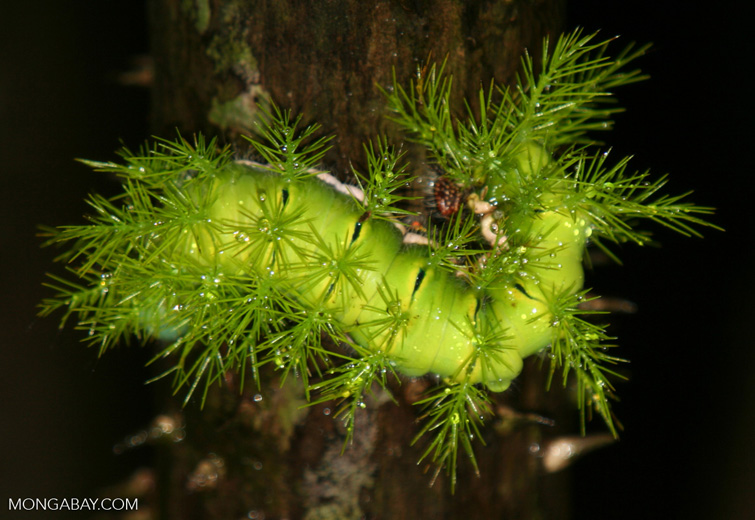- Behind the lodgepole pine’s image of great strength, researchers have found that there is a tiny helper that assists in the life, death and renewal of the tree species.
- A recent 4000-meter-deep dive serves as a reminder that our oceans are still full of surprises.
- Researchers are sharing their concerns surrounding the future of wild relatives of our key food crops.
Imbalance in funding for endangered species is ‘costly but futile’ [Wired]
A new study led by Leah Gerber, an Arizona State University researcher, looked at U.S. funding for endangered species and revealed an imbalance in the protection of animals. The study found that some species continued to receive a large portion of conservation funds even though population numbers failed to recover as planned.
Jellyfish play a more important role in the marine food web than originally thought [Nature]
Obtaining the funds needed to study jellyfish has been met with several challenges, one of those being that many biologists have long-viewed the creatures as being a food web dead end and therefore a low priority in terms of research. But this perspective is beginning to change as growing evidence convinces some marine ecologists that the soft-bodied organisms are more relevant than previously thought.
Tiny fungi could hold the key to the survival for this towering pine species [Phys.org]
The lodgepole pine is seen as a symbol of Alberta’s beauty, strength and prosperity. Yet behind the tree species’ image of great strength, researchers have found that there is a tiny helper that assists in the life, death and renewal of the lodgepole pine.

Is logging to blame for one of the largest fires to ever be observed in Central African rainforests? [Mongabay]
In late January and early March, a huge fire ripped through the forests of the Republic of Congo. Satellite data show it totaled more than 15,000 hectares (150 square kilometers), making the fire one of the largest ever observed in Central Africa’s rainforests. A research organization says El Niño is largely to blame, but that human activities in the region may also have exacerbated the situation.
A Hawaiian deep-sea expedition reveals never-before-seen life and landforms [New Scientist]
A recent 4000-meter-deep dive serves as a reminder that our oceans are still full of surprises. As a general rule, the deeper you dive into the ocean, the fewer living organisms you will find, but a diving expedition in Hawaii last month resulted in thousands of samples and images of newly discovered marine life and landforms.
Could indigenous women hold the key to sustainable development? [Intern Press Service]
Indigenous women are demanding that their governments recognize them as a driving force behind economic and social development. Some indigenous women groups, such as those from Samburu, have provided for their entire community by constructing new houses and schools for the past 20 years. Yet for the most part, indigenous women are excluded by government policies.

Food characteristics such as drought or heat resilience could be lost forever [BBC]
Researchers are sharing their concerns surrounding the future of wild relatives of our key food crops. There are over 1,500 institutional crop gene banks around the world, yet an international team of scientists has found that these gene banks are not doing enough to maintain the diversity of crops’ wild relatives.
Largest biosphere reserve in North America is first of its kind in Canada [Mongabay]
Twenty new UNESCO biosphere reserves were recently designated around the world. Included in these is the brand new Tsá Túé International Biosphere Reserve, the first in northern Canada and the first to be led entirely by indigenous communities.
A study finds that city-dwelling birds may be smarter than their country relatives [UPI]
According to biologists, birds living in cities require extra knowledge that allows them to utilize the unique resources and environments. Recently a team of researchers tested the cognitive abilities of birds from both the city and countryside in order to measure that extra knowledge.

MONGABAY HIGHLIGHTS
This new butterfly could serve as an early warning for environmental changes
This is the first new butterfly species to be described from Alaska in decades and may be Alaska’s only endemic butterfly, which means that it is found nowhere else on earth. Researchers think that the Tanana Arctic could have evolved from the offspring of two related butterfly species – the Chryxus Arctic and the White-veined Arctic – during the last ice age period.
Conservation giant pledges another $100M toward Amazon protected areas
The Gordon and Betty Moore Foundation — the biggest private supporter of conservation in the world’s largest rainforest — has pledged another $100 million toward efforts to establish and support protected areas across the Andes-Amazon landscape.

Promises haven’t been kept for Southeast Asia’s seafood slaves
Hundreds of Southeast Asian mainlanders who were trafficked onto Thai-run fishing boats in Indonesia have been rescued and repatriated in recent months. Al Jazeera tracked down four ex-slaves to their homes in Myanmar. None had received the compensation they were promised when they agreed to return to the country.
Conservation dogs enhance our ability to understand and protect wild species
A field biologist sheds light on the use of scent dogs to study and conserve species, from armadillos to whales. While breed doesn’t seem to matter, a key requirement for a conservation dog is its ability to want to work for reward, especially a chance to play.
